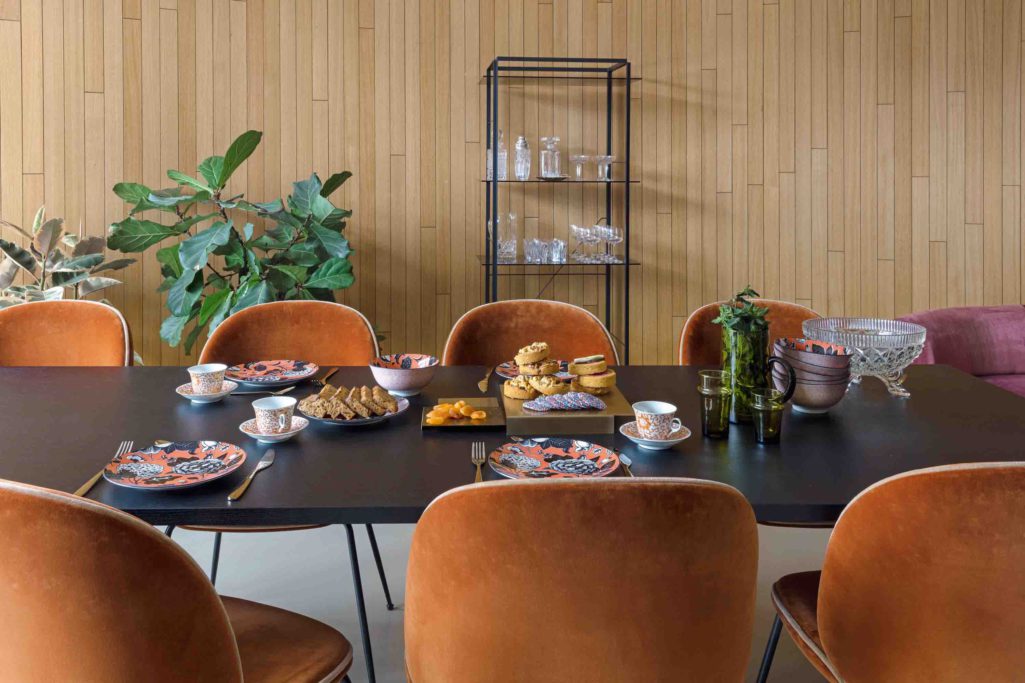How to use colour psychology in your restaurant interior design
Colour, psychology, and restaurant interior design
The use of colour in the interiors of truly great restaurants is not an arbitrary choice and never should be. Colour affects far more than just the visual impression of a space: it can touch on the mood of its inhabitants, and even their eating or spending habits. Read on about the psychology of colour and what harnessing it can mean for your bar or restaurant interior.
Colour creates experience
Colour can be the difference between your restaurant defined by customers as the place to grab a quick bite, as the place to enjoy a leisurely coffee and dessert, or as the place to really chow down on a full three-course-meal...and so on. In other words, a street-side diner attracts one kind of person, and haute cuisine restaurants attract another. Bar and restaurant owners usually know exactly who their target market is, and make deliberate choices in their interior design to appeal to that segment of the population. If you’re just starting out though and aren’t too sure on what direction you want to go in, we recommend working with a branding team and an interior designer to keep a consistent style and make the best choices for you.
Intentional choices in design can help set the expectations of your clientele and attract the kinds of diners you want.
Colour, though, is a huge spectrum.
Even using generic names for colours, such as red, blue, yellow, can be limiting, as within each colour there’s a world of shade and variance.
Colours influence how people eat
Colour can even go so far as to influence diners’ eating habits.
No, really.
Grey or black, for example, are better suited for sleek reception areas rather than in a restaurant, as they diminish the appetite at best, or at worst literally repel people from the thought of eating.
That’s seriously not what you’re looking for.
So what does work then?
Well, we’ve discovered that red, orange and yellow tones are the best to go with if you’re decorating your bar or restaurant as they stimulate the appetite far more than cooler tones could ever hope to do.
Colours that can lend a helping hand trend towards green and turquoise and some shades of blue, simulating a feeling of good health and calm wellbeing in the minds of your customers.
When you think about it, you realise that there is actually a reason salad bars have green or turquoise interiors.
A knock-on effect for your interior design choices
Colours not only affect the eating or drinking habits of your customers, they affect their moods as well.
For this reason, colour in interior design has a bit of a knock-on effect. Let’s look at that for a moment:
- Decorating in warm shades heighten the mood as well, taking on a double duty to entice your clientele into having a good time.
- Having a good time will give them pleasant memories of their experience at your restaurant.
- These feel-good memories in turn will play a large part in inviting your clientele to come back for a repeat visit.
Use your knowledge of colour psychology to make your other design decisions
This blog post touches on colour theory, a design-centric system that might not stray often into the everyday lives of bar and restaurant owners and managers.
It is, however, a vital tool in the arsenal of the interior designer.
We advise to begin with your colours and branding, and then go from there to let those colours help you make your other design decisions.
Everything in interior design should be cohesive: lighting fits with textures, which fit with furnishing style and acoustic design decisions, and so on.
Let’s get colourful
We’ve reached the end of this post about the psychological effects of colour use in interior design. If you’re excited and want to share your own ideas and experiences with colour, leave us a comment on Instagram.
